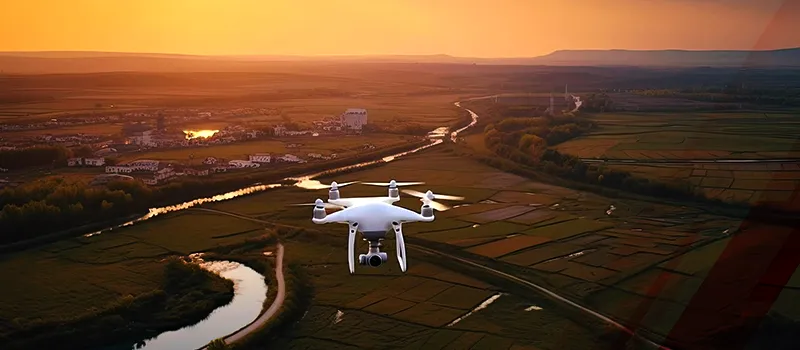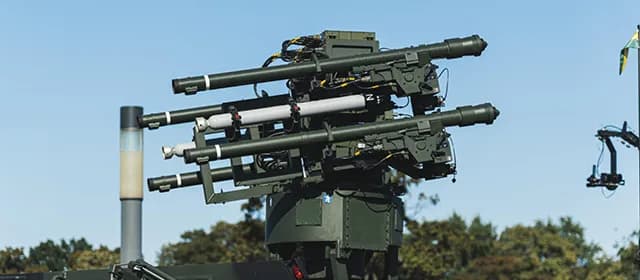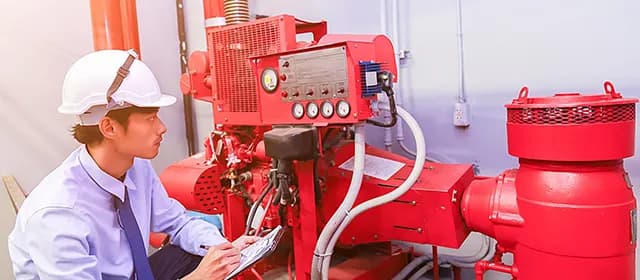Have you ever dreamt of being a pilot, rocketing through the skies with complete liberty? Well, drone autopilots are here to turn that dream into reality. These intelligent co-pilots have revolutionized the world of drones, providing them with the power to fly like savvy aviators. These autonomous companions allow us to navigate with intelligence, precision, and freedom.
So, get ready to take a high flight to experience a new level of aerial adventure in this ultimate guide.
What are Drone Autopilots?
Drone autopilots are systems or devices that allow unmanned aerial vehicles (UAVs) or drones to fly autonomously or semi-autonomously. Autopilots are responsible for controlling the drone aircraft, including navigation, stability, and executing pre-programmed flight plans or commands. They typically consist of hardware and software components that work together to provide flight control and automation capabilities.
As per the report released by Kings Research, the global drone autopilot market is likely to reach $1,016.2 million in revenue by 2030, growing at a CAGR (compound annual growth rate) of 5.09% from 2023 to 2030. These statistics highlight the significant growth within this sector.
Major Components of Drone Autopilots
An autopilot system consists of several components, including:
- Flight Controller
The flight controller is the brain of the drone, reading sensor data and calculating the best commands to send for it to fly. Companies like DJI, Pixhawk, and Ardupilot offer flight controllers featuring autonomous flying capabilities and flight control algorithms.
- Processor
The processor runs the autopilot firmware and performs calculations, with most having 32-bit processors.
- Accelerometer and Gyroscope
The accelerometer and gyroscope measure acceleration forces and rotational forces, allowing the flight controller to calculate the drone's current attitude (the angle at which it flies) and make necessary corrections.
- Compass Sensor
The compass sensor measures magnetic force, which is important for multi-rotor drones as they can only fly in one direction.
- Barometers
Barometers measure altitude and airspeed, while airspeed sensors measure airflow over the wings to generate lift.
- Data logging
Data logging stores a log of all the autopilot's actions, useful for troubleshooting.
- Sensor Fusion
It allows the autopilot to control the drone effectively by combining measurements from all sensors.
- GPS Modules
GPS modules measure the drone's location and altitude but are inaccurate and only provide a position within 5m.
- Satellite Networks
Satellite networks like the Russian GLONASS network improve reliability and performance by allowing GPS receivers to communicate on more than one network.
- GPS Modules
Common GPS modules include the Ublox Neo 7N and Ublox Neo M8N 521 modules. Mounting the GPS module on the top of the drone ensures a solid GPS signal and includes a compass sensor.
Integrating AI with Drone Autopilot Systems
AI integration in the autopilot system of drones offers advanced features and the ability to make independent decisions. With the help of advanced AI algorithms, these systems can process data from sensors and enable autonomous navigation, maintain stable flight, detect and track objects, and optimize flight routes, as well as make smart decisions based on data analysis and coordinate with other drones in a swarm.
Additionally, AI-equipped drones are increasingly employed in handling large volumes of data for various applications such as mapping, environmental monitoring, and precision agriculture. The AI technology in drone autopilot systems is continually progressing, with ongoing research contributing to advancements in deep reinforcement learning, predictive analytics, and more sophisticated decision-making capabilities.
Top 3 Players in the Drone Autopilot Industry
Here are the top three players in the industry, paving the way for drone technology.
1. UAV Navigation
UAV Navigation, a Spanish-based private company, has specialized in designing guidance, navigation, and control solutions for unmanned aerial vehicles (UAVs) since 2004. Its flight control solutions are trusted by leading aerospace manufacturers for a wide range of platforms and operational environments, ensuring high performance even in challenging weather conditions.
The UAV Navigation website portfolio includes advanced autopilots for UAV navigation, such as the VECTOR-400 and VECTOR-600. The VECTOR-400 is a robust, dependable autopilot that meets MIL-STD (Military Standard), making it the Flight Control Computer for aerial target applications. The VECTOR-600 is the most reliable autopilot for fixed-wing, rotary-wing, and VTOL UAVs.
2. Embention
Emotion is a renowned player in the autonomous vehicle industry. It is recognized for its high-performance systems designed for UAVs and eVTOL, adhering to aircraft certification standards.
The company has developed the 'Veronte Autopilot 1x', a miniaturized avionics system for advanced autonomous vehicle control. It offers easy customization and complies with aviation standards, such as DO178C, ED-12, DO254, and DO160. It is equipped with advanced sensors, processors, LOS and BLOS M2M data link radio, and remote ID, or ADS-B.
3. Sky-Drones Technologies Ltd.
Sky-Drones Technologies Ltd. is a company that specializes in developing advanced drone autopilot systems and software solutions. The company offers a wide range of drones equipped with AI.
Sky-Drones has developed AIRLink, an AI-based and remote-linked drone. This unit consists of an advanced drone autopilot, an AI mission computer, and a connectivity unit compatible with either 4G LTE or 5G. The AIRLink can boost business drone operations and significantly shorten the time to market, going from months or even years down to a few weeks.
Final Takeaway
Drone autopilots are revolutionizing the way we use drones, transforming them from mere aerial photography tools to intelligent aerial robots capable of performing complex maneuvers and adapting to their surroundings. These systems use sensors, algorithms, and software to provide stability and precise positioning and follow predetermined flight paths.
Artificial intelligence and machine learning enable them to make quick decisions and navigate complex environments. The technology is also making waves in agriculture, infrastructure inspection, emergency response, and package delivery. With ongoing advancements in drone autopilot technology, the potential for seamlessly integrating drones into daily activities becomes limitless.




